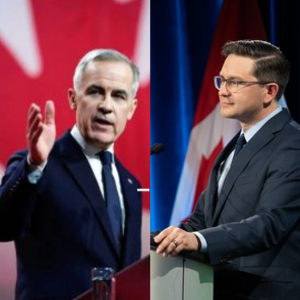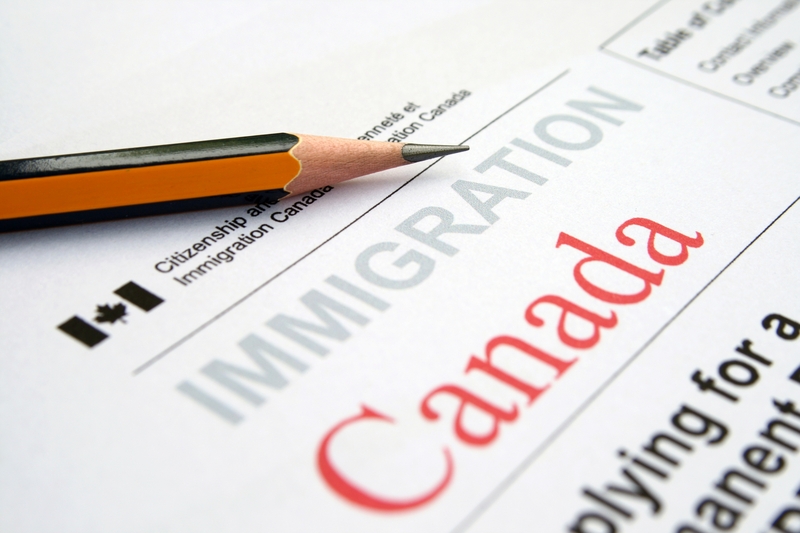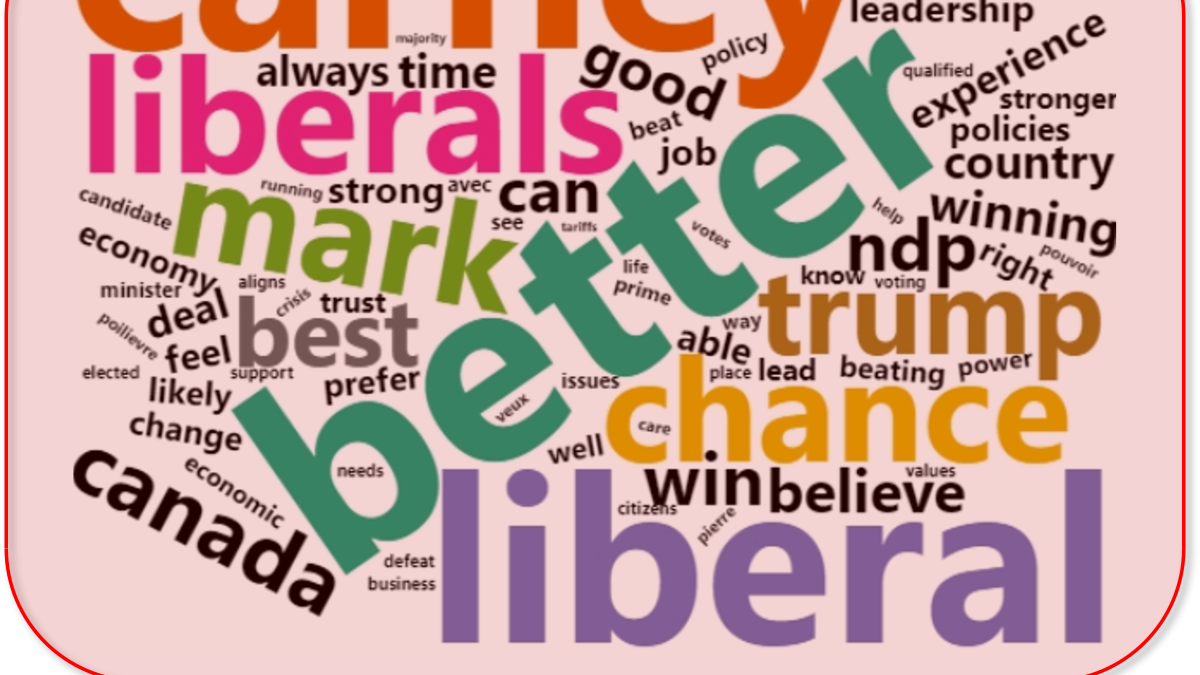
Liberals are breaking through with younger voters in this wave. Leadership, shared values and bandwagon effects are driving the Liberal vote. Shared values and time for a change drive Conservative voters.
These are the topline findings of an online survey of 1,341 Canadian citizens sponsored and conducted by Innovative Research Group Inc. (INNOVATIVE) between April 3rd and April 7th, 2025. Results are weighted by age, gender, region, education, and self-reported federal past vote to ensure that the overall sample’s composition reflects that of the actual population according to Census data.
On Monday we discussed the topline ballot of the race, tariff issue impacts, and leader’s images – you can catch up here if you missed it. Today we want to draw attention to some of the deeper movements we can see in the data that underpin those toplines.
We are seeing significant movement in the Business Liberal and Deferential Conservative clusters. Business Liberals are now 50% LPC in decided vote, taking primarily from CPC support. Deferential Conservatives are now 42% LPC in decided vote, taking primarily from the (small) NDP and Bloc segments of that cluster. Both are gains for the LPC in populations that the CPC would like to be making up ground in.
Another key audience we are tracking is the Time for a Change Liberals – people who both think that it is time for a change in government, and that the Liberals are best suited to form government despite their problems. This audience – 20% of the sample –trend younger, were swinging to the CPC much of the last year, and are one of the election’s critical battlegrounds. 47% of our Time for a Change Liberal population is in Ontario, and 47% of that population is 18-34. With the LPC taking a lead in that age bracket (42-28 over the CPC nationally) and Time for a Change Liberals breaking 50% for the LPC in this wave the Liberals are shoring up their support in an area crucial to the election’s outcome.
Open-ended responses regarding first and second-choice vote preferences help in understanding both the drivers of support and the barriers to support for each party.
Voters who choose the Liberal Party as their 1st choice cite good leadership (25%), shared values (23%), and perceived chance of winning (17%) as their top reasons for choosing Liberals. Examining a Word Cloud emphasizes not only the Liberal brand but also Carney’s name, reinforcing that it is Carney himself is helping make this choice. Words like “better,” “Trump,” “Canada,” and “chance” reflect the underpinnings working for the Liberals.
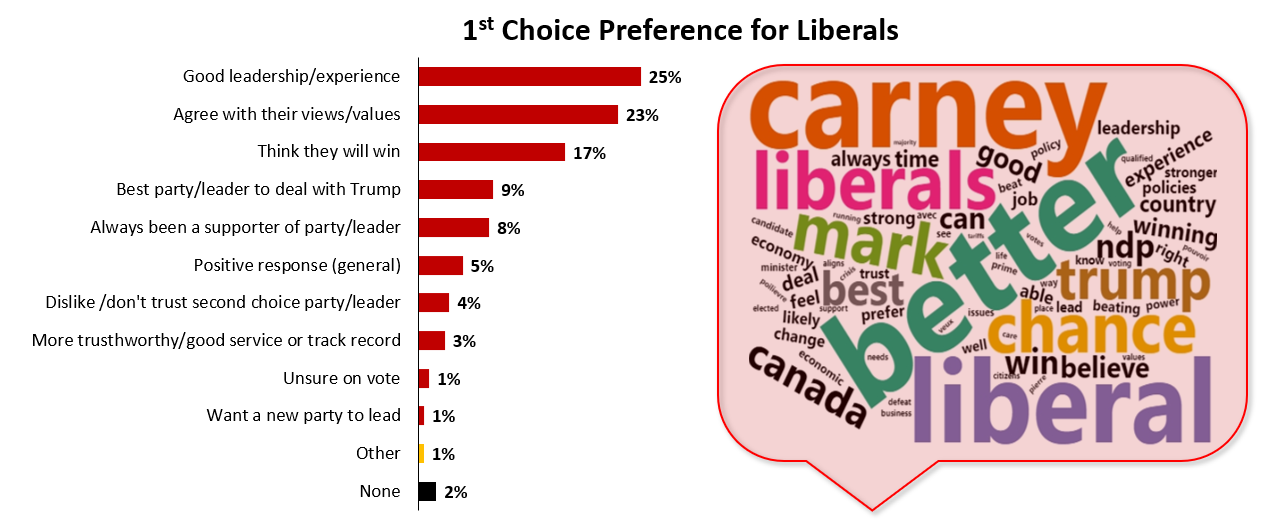
While Carney has momentum, Trudeau’s legacy still appears to weigh on the swing voters. The Liberal Barrier Word Cloud shows “Trudeau,” “past,” and “change.” Hesitancy to vote for the Liberals is connected to distrust in the previous leader, concerns about policies, and unfamiliarity.
Conservatives benefit from a desire for change and alignment with their core values (33%). The Word Cloud highlights the “need for this change” as a most prominent driver of vote; some issues, such as the economy and taxes, are also coming through. The main holdbacks for Conservatives among swing voters are distrust in the “leader” and a preference for their first choice.
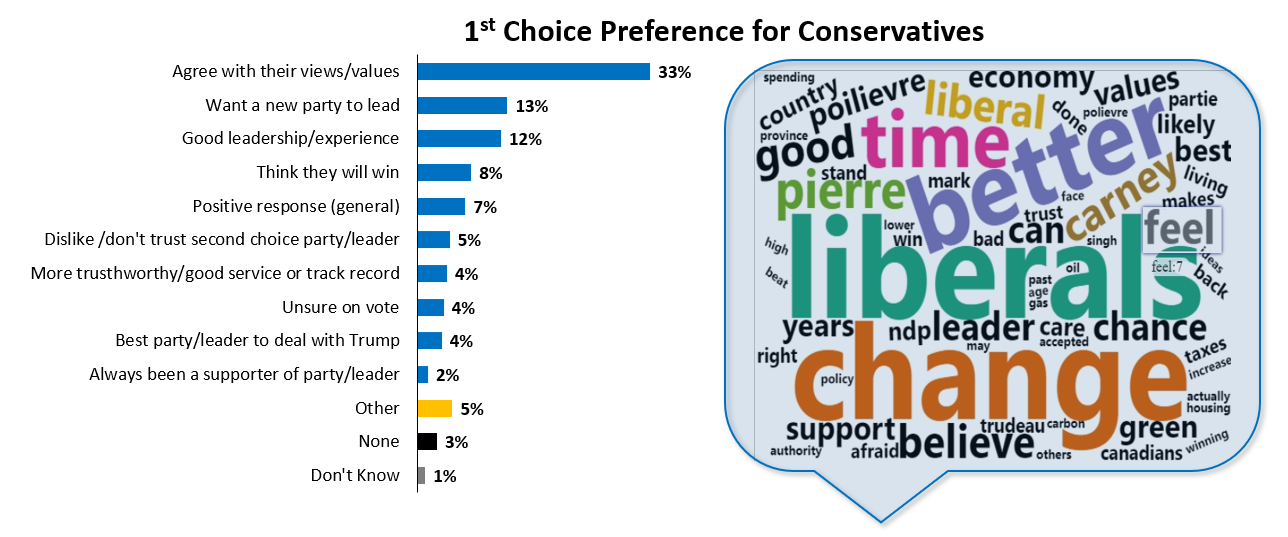
Half of NDP supporters chose them as their first choice because they agreed with their views and values. The issues that are coming through are the hope for “progressive,” “alignment,” and better “policies.” Those who selected NDP as their 2nd choice cite the main holdback as not believing they will win.
Bloc’s support remains deeply identity-based, with 64% agreeing with their views/values as a reason for voting.
A deeper dive into the reasons behind the approval of the Federal government’s approach dealing with the Trump presidency reveals that of those who approve of it, 38% report general approval, 19% agree with standing up to Trump, and an additional 13% support the approach in standing up to Trump with specific measures (e.g. imposing tariffs). The top reasons for disapproval of the federal government in response to Trump are distrust, and a belief that the Federal government is not doing enough. Those who are neutral or unsure want more information, feel the issue has no personal impact, are indifferent, or that the Federal government should take a stronger stance.
The top reason for approval of the provincial government’s approach to handling Trump is the belief that they are doing it well (45% say that). 28% of those who disapprove think that the provincial government isn’t doing enough or is not taking a stronger stance. 16% of those who are neutral or unsure want more information, and 15% think the government should take a stronger stance. Alberta’s government scores notably lower on approval in this area than other provinces.
With a majority of voters saying they have heard all they need to make up their minds (up 5-points this week), all three opposition parties now need to knock tentative voters away from the Liberals to stop the Liberals from winning a fourth term. The Conservatives have an opportunity to convert votes if they can reach enough people with their improved message response – we will be watching the share of attention closely.
Click here to read the full report!

